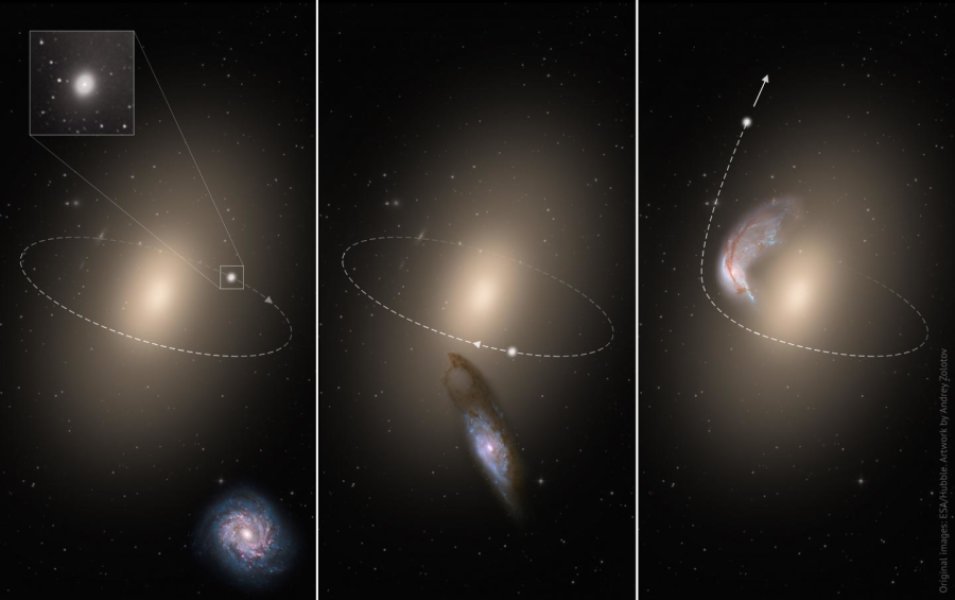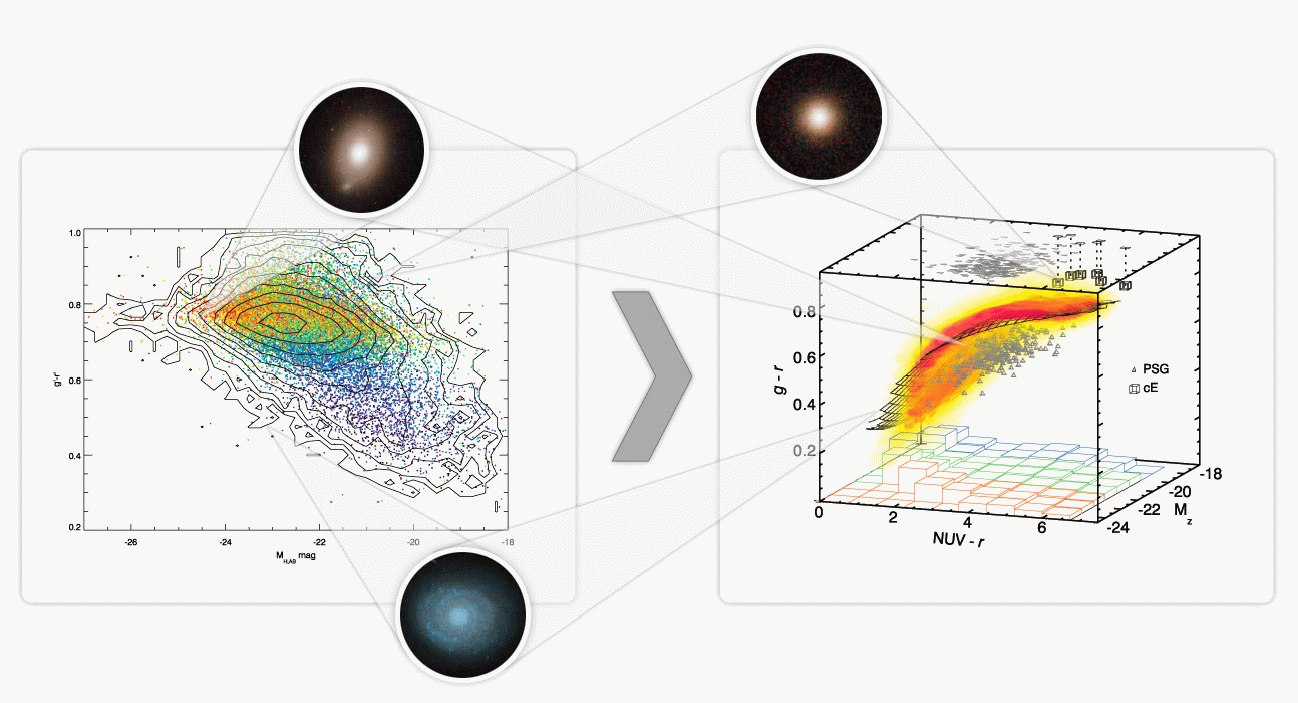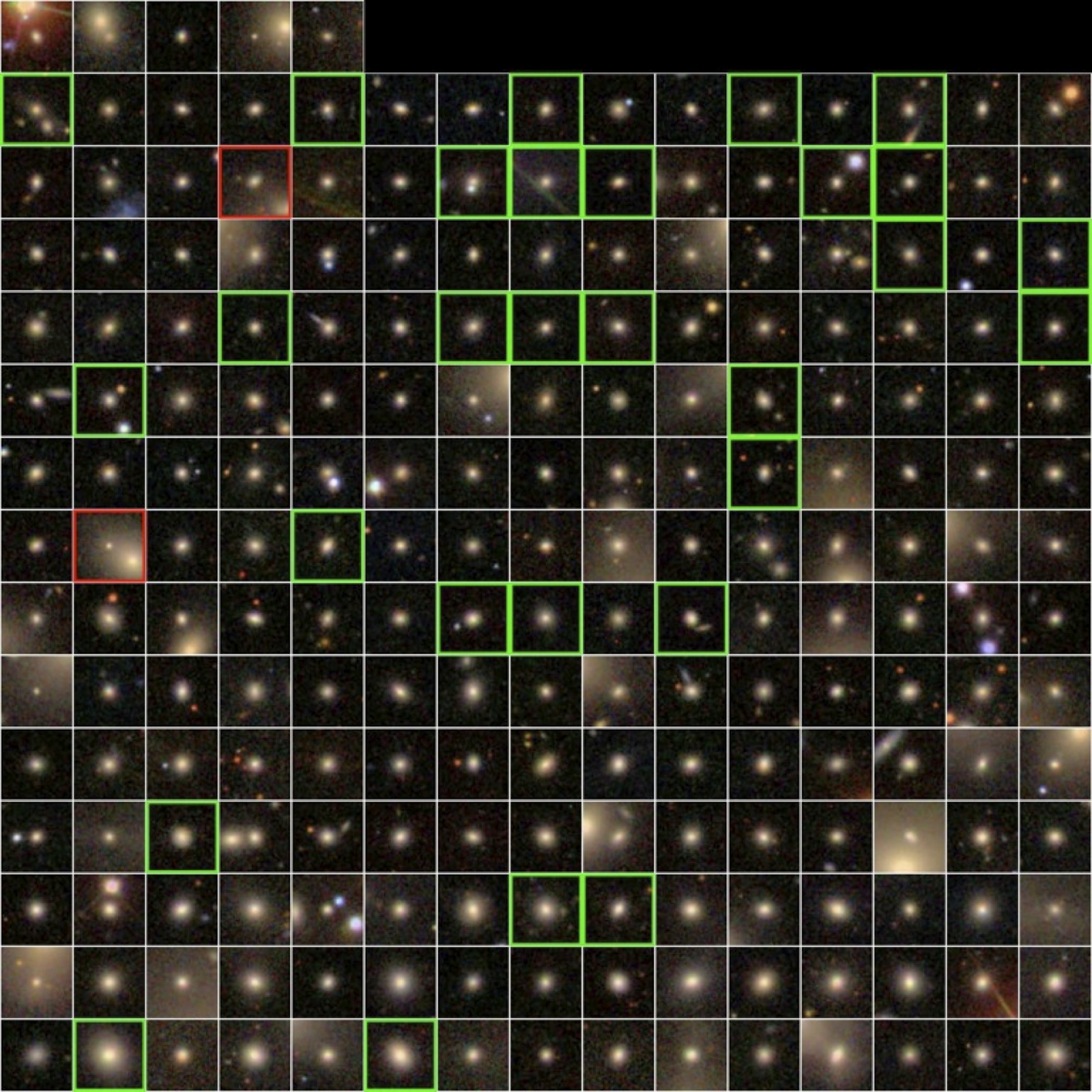Simple yet precise online service
which allows one to determine
k-corrections of a galaxy in any popular photometric
bandpass, given its redshift and
one or more colors. For bulk computation we provide
easy-to-use Python and IDL code.
A catalog of 800,299 UV-to-NIR galaxy spectral energy distributions and optical spectra compiled from GALEX, SDSS and UKIDSS data, with additional value added properties such as gas phase metallicities and non-parametric emission lines measurements. Query it using search field above.
A universal relation of optical and near-UV colours and luminosities of non-active galaxies which is connected to their star formation histories — the first scientific result obtained with RCSED.
By mining the RCSED database, astronomers have added 195 rare compact elliptical galaxies to only 25 known before. Most of the newly discovered objects were in galaxy clusters, but 11 were free fliers ejected by gravitational slingshot effect from their birth places, the team reported in Science.
Galaxies exhibit a bimodal distribution in the optical color-magnitude space with a narrow "red sequence" populated by mostly early-type galaxies and a broad "blue cloud" containing star-forming objects. Researchers from Harvard and Paris Observatory added the near ultraviolet (NUV-r) color to it and discovered a tight relation in the 3D color-color-magnitude space smoothly continuing from the "blue cloud" to the "red sequence". Followed by the majority of galaxies, it can be used as a powerful classification tool, as well as a new distance estimator for intermediate redshifts that requires a minimal set of observables.
Here we propose a step-by-step guide to reproduce a compact elliptical galaxy search which resulted in a Science magazine publication. This guide exploits Virtual Observatory desktop applications such as TOPCAT, VOSpec and Aladin, and uses the RCSED catalog data.
RCSED (stands for the Reference Catalog of galaxy Spectral Energy Distributions) is a catalog of galaxies produced as join between GALEX, SDSS, and UKIDSS catalogs, and processed with state-of-the-art spectral analysis methods which were not available earlier. It therefore covers approximately 25% of the sky and contains k-corrected ultraviolet-to-near-infrared photometry of some 1 million galaxies, as well as properties of their stellar population, stellar and gas phase metallicity, morphological classification (from Galaxy Zoo), emission line parameters (measured by gaussian fitting and non-parametrically) and bulge + disk light profile decomposition (from Simard et al.) The multitude of data access methods compatible with the Virtual Observatory (in particular, table and spectral access services) and easy-to-use website with simple query language make RCSED a new generation catalog.
As one of the richest data collections on galaxies RCSED enables wide range of studies in extragalactic astrophysics (see examples in the Articles section). If you find RCSED useful for your research, please acknowledge it.
Start by trying one of the example queries next to the search field above and exploring individual webpages of found galaxies, or following a tutorial (we aim to add more soon). Please note that if you do not find your favorite galaxy in the RCSED database, it means that it is not included in the SDSS spectral sample of galaxies, or possibly marked there as an active galactic nucleus. If you believe that this is a mistake, please report it here.
Basic syntax
It is possible to filter RCSED catalog table using simple boolean expressions query language which mimics syntax ofWHERE clause in SQL language.
The language consists of arbitrary number of expressions combined
together using AND or OR clauses. Expression usually has the
following
structure (square brackets mean optional clauses):parameter
operator value [AND | OR [NOT] expression] [, …]where
parameter is the name of any galaxy property present
in the database, or their arithmetic combination. There is no unit specification so the actual query
compares the
data with user input value in the default database units.Query examples
NGC 60– select galaxies in 1 arcmin vicinity of NGC 60cone('Coma', '210arcmin') AND z > 0.0136 AND z < 0.0336 AND corrmag_g - corrmag_r < 0.4– select bluer galaxies not further than 210 arcmin from Coma cluster centergauss_f6565_h_alpha_flx / gauss_f6565_h_alpha_flx_err > 10 AND galaxyzoo_elliptical = 1– select elliptical galaxies with signal-to-noise ratio of Hα emission above 10objid IN {3, 4}– select specific sources by their object IDs (useful for larger subsets)


